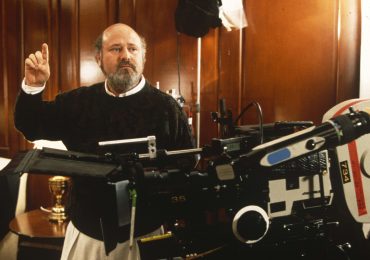In 2023, the Philadelphia Eagles are perhaps best known for the “tush push” or “brotherly shove,” as it’s called in Philadelphia. The play is a devastatingly effective version of a quarterback sneak in which players line up and push quarterback Jalen Hurts who burrows over All-Pro Center Jason Kelce to gain the yards the Eagles need. But while the play has generated all sorts of debate—should it be outlawed? Are calls to ban it just sour grapes from teams who run the play less well—few have paid attention to the origins of the play. Even the Eagles themselves may have its roots all wrong.
[time-brightcove not-tgx=”true”]
The play’s origins actually lie with Napoleon Bonaparte, the French emperor and general, of all people. Though Bonaparte died decades before the invention of football, his war strategy influenced the design of a play eerily similar to what the Eagles are doing on the field today. Its history offers clues about the future of the “brotherly shove.”
The play that the Eagles use in fourth and short situations resembles a formation called the “flying wedge,” which universities ran in the 1890s. The “flying wedge” concentrated players in a narrow formation that allowed them to more effectively break through the resistance of the defense.
Read More: The Historic Significance of a Super Bowl With Two Black Starting Quarterbacks
Identifying the man who developed the flying wedge isn’t straightforward. Some accounts credit Harvard University football coach Lorin Deland with developing the play in 1892. Others say it was actually W.H. Lewis, the first African American All American, who purportedly invented the play when he was Harvard’s coach in 1898. In different articles, in fact, the Harvard Crimson credited both men with the creation.
But one thing is consistent in both accounts: the inspiration for the play originated with the study of military history, specifically Bonaparte’s strategy at the Battle of Austerlitz where the French emperor defeated Austria and Russia in 1805.
Read More: The Kelce Brothers’ Mom Wishes They Would Call More (Especially You, Jason)
Deland fancied himself an amateur military historian and his 1917 obituary explicitly stated that he had used “Napoleon’s methods for turning the enemy’s flank” in his football coaching. Deland reportedly came up with the formation after reading the Historie du consulat et de empire (1845) by Adolphe Thiers, which lionized Napoleon and his tactics.
Pierre de Coubertin, the father of the modern Olympic Games was reportedly present when Deland’s team first ran the flying wedge. In his 1898 article “Napoleon et le football,” Coubertin wrote that the general watched the play’s debut from heaven and it “warmed his warrior spirit.” So pleased was the spirit of Bonaparte, Coubertin asserted, that he prayed “Saint Peter would, when the day came, allow Mr. Deland, his prophet, to enter heaven straight away.”
A 1926 Crimson article about Lewis helps account for the murkiness over the origins of the flying wedge. Even so, like those accounts crediting Deland with the play’s creation, it cites the influence of Bonaparte. The article quoted a Boston Herald story asserting that Lewis had come up with the flying wedge while trying to find a counter to the “guards back” formation utilized by the University of Pennsylvania. Lewis was certain he had seen a similar formation defeated and he finally realized, “it was at the Battle of Austerlitz that Napoleon had executed the coup that I had in mind.”
This description of Lewis’ “creation” of the play indicates that the confusion over the roots of the flying wedge may have a simple answer. Deland invented the play, and a few years later, Lewis came up with a defense to thwart Penn’s version of it, rather than inventing the wedge itself. If so, then Napoleon’s military strategy influenced both the creation of the formation, and the development of a defense that aimed to stop it.
Read More: Taylor Swift Continues to Make the NFL Must-Watch TV
Those in charge of setting the game’s rules quickly decided that the flying wedge was too dangerous for players. To lessen the potential for injury, the Rules Committee, an informal group dominated by Yale’s Walter Camp, the father of football, and perhaps not un-coincidentally the coach of Harvard’s arch rival, outlawed Deland’s use of the wedge on kickoffs. Given Camp’s position, it’s possible that arguments about safety simply cloaked an attempt at gaining a competitive edge. Regardless, after the “football crisis of 1905,” when 19 players died playing the game, primarily from head or spinal injuries, reformers, this time led by Harvard’s Bill Reid—who successfully kept the Camp led Rules Committee from meeting—completely banished such mass formations or momentum plays.
It seems the Eagles know nothing about this history despite the similarity between their Brotherly Shove and the flying wedge. Philadelphia Inquirer beat writer Olivia Reiner reported that Richie Gray, a Scottish rugby coach, served as the inspiration for the Eagles’ play.
Yet, the play has many similarities to the flying wedge. And history might be repeating itself.
Football players are more heavily armored than they were in 1905, but Kansas City Chiefs quarterback Patrick Mahomes dislocated his knee while running a quarterback sneak in 2019, so the play is not without danger. Once again, there are calls to outlaw it—mostly from people whose teams don’t run the Brotherly Shove nearly as well as the Eagles.
It seems possible that we’re headed for an echo of the 1890s. Those who are upset about the effectiveness of the play may again use safety concerns about the dangers of pushing players, or giant piles to justify banning it.
Understanding this history casts objections to the Brotherly Shove in a new light. It also may teach the Eagles about the unlikely French military origins of their favorite play.
Russ Crawford is a professor of history at Ohio Northern University and a football historian. He has published three books: The Use of Sports to Promote the American Way of Life During the Cold War: Cultural Propaganda, 1945-1963 (2008), Le Football: The History of American Football in France (2016), and Women’s American Football: Breaking Barriers On and Off the Field (2022). Made by History takes readers beyond the headlines with articles written and edited by professional historians. Learn more about Made by History at TIME here.
Leave a comment















